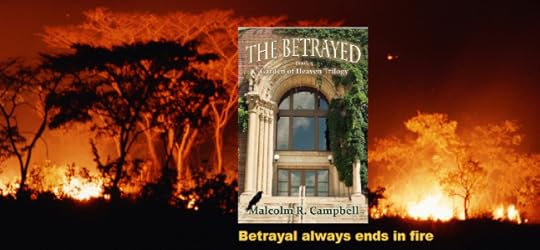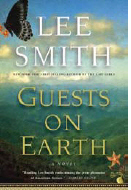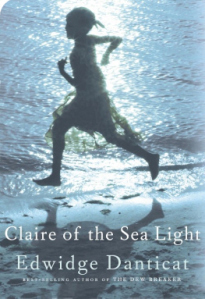Malcolm R. Campbell's Blog, page 221
December 5, 2013
Early Mountain Mornings and Alpine Glow

Alpine Glow at Many Glacier Hotel. Notice that true alpine glow is being pushed out by the direct light. – photo by Jeff Pang
Lucky short-term tourists and almost all long-term visitors to Glacier National Park learn about the beauty of alpine glow (called alpenglow in many parts of the world). While some mistake sunlight on the mountains at sunrise and sunset as alpine glow, true alpine glow occurs only when the sun is below the horizon. It comes from light that’s reflected by snow, water or ice particles in the atmosphere. There is often a red or purple hue within the glow.
One of my three jobs at Many Glacier Hotel in the park’s Swiftcurrent Valley required me to be on duty by 5 a.m. several days a week. When I walked over the rise that separated the hotel from the dorm, I checked my watch to make sure I wasn’t late because the hotel manager, Ian B. Tippet was always there before dawn. Since he was there, he firmly believed everyone else should be there.

Grinnell Point and Heavy Shield Mountain across Swiftcurrent Lake from the hotel – photo by Joe Dsilva
While the light in the manager’s office near the lobby attracted my attention first, those mornings when alpine glow bathed the peaks and turned glaciers and snow patches into shimmering light sources, my early hours job gave me a gift most employees and guests slept through.
When I saw Ian Tippet at the park this fall, we joked when he said, “we always began promptly at 5 a.m., a beautiful time to be awake.” I agreed, but didn’t mention that I looked at his office window before breathing in the sky.
I always wanted to see the alpine glow on Mt. Everest, or even in the Alps where the term originated. However, the mountains of Glacier made many early mornings worth losing sleep over.
Malcolm R. Campbell is the author of contemporary fantasy novels including “The Seeker” which is set at Many Glacier hotel.

A Glacier Park novel on Kindle


December 3, 2013
Briefly Noted: ‘Chief Mountain: Home of the Thunderbird’
Chief Mountain: Home of the Thunderbird – Physical, Historical, and Spiritual Perspectives, by Dave Shea, Thomas Printing, 2010, Second Edition, 42pp, photographs, maps, charts
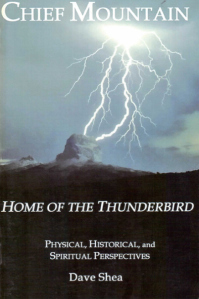 Backcountry ranger, wildlife biologist and botanist Dave Shea worked in Glacier National Park for almost four decades, spending many years at the Belly River Ranger station in the shadow of Chief Mountain. Shea writes that those who have seen that shadow in the valley in March and September call it “the sacred shadow.”
Backcountry ranger, wildlife biologist and botanist Dave Shea worked in Glacier National Park for almost four decades, spending many years at the Belly River Ranger station in the shadow of Chief Mountain. Shea writes that those who have seen that shadow in the valley in March and September call it “the sacred shadow.”
This tightly written, encyclopedic book shows that Shea has come to understand the rock, natural forces, legends and people behind that shadow very well. Without a doubt, Chief Mountain (Nináistuko) is the one of the most distinctive, visible and photographed peaks in Montana.
While Glacier specialists and friends of the park will have seen most of the geological information in the first part of the volume elsewhere, the book is an able summary of Chief’s setting within the Rocky Mountain Front as well as its importance and current status as a sacred site to the Blackfeet Nation. In addition to the spectacular cover photo by B. Riley McClelland, the author’s photographs are a beautiful addition to the book.
From the Publisher
For 36 years, Dave Shea prowled Glacier Park’s wilds as a backcountry ranger, patrolling trails, managing wildlife, leading search and rescue efforts. And for 11 of those years, he and his wife, Genevieve, lived, quite literally, in the shadow of Montana’s most sacred mountain. And so it’s appropriate, perhaps, that when Dave Shea set out to put the peak on the page, he did so in what could be described, in terms of size, as a booklet, but in scope is most decidedly a full-blown book.
Reviewer’s Comments
“It’s clear Chief has become a character in Shea’s life, a fully animated wonder complete with presence and with moods and with attitude,” writes Michael Jamison in the Missoulian. “In a cave, near the summit, lives Thunderbird and the Thunder-Maker Pipe. The Wind Spirit resides here, as does Old Man Napi. The Sacred Shadow reaches far into the backbone, and each spring and autumn darkens other peaks with the outline of the Chief.”
Shea, described by the Missolian as “one of Glacier Park’s last old-school patrol rangers – a man competent and comfortable and completely content in the backcountry,” is also the author of the NPS field checklists “Mammals of Glacier National Park” and “Birds of Glacier National Park.”
Malcolm R. Campbell, a seasonal employee at Many Glacier Hotel in the park in 1960s, is the author of contemporary fantasy novels including “The Seeker.” “The Seeker” is partially set in Glacier during the historic flood of 1964.

A Glacier Park novel on Kindle


November 26, 2013
A few of my favorites: fairy tale quotations
“A fairy tale is a type of short story that typically features European folkloric fantasy characters, such as fairies, goblins, elves, trolls, dwarves, giants, mermaids, or gnomes, and usually magic or enchantments. Fairy tales may be distinguished from other folk narratives such as legends (which generally involve belief in the veracity of the events described) and explicitly moral tales, including beast fables.” Wikipedia
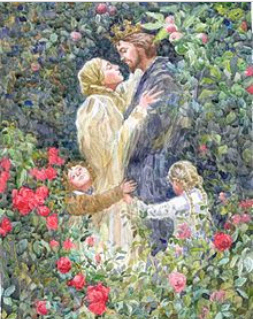
Rapunzel – an illustration from the Brothers Grimm adaptation
Are parents reading fairy tales to their children today? I hope so. At Thanksgiving, people often tell us to ponder what we’re thankful for. That’s probably to keep us from thinking it’s all about food, football and getting stuck washing dishes in the kitchen. I’m thankful for fairy tales, the ones my parents read to me, the ones I read to myself, and the ones kept alive in all their forms and versions by those who love the stories enough to spend their lives collecting, translating and studying them.
Here’s what those lovers of the stories have to say about them. . .
“The more one knows fairy tales the less fantastical they appear; they can be vehicles of the grimmest realism, expressing hope against all the odds with gritted teeth.” – Marina Warner, From the Beast to the Blonde: On Fairy Tales and Their Tellers
“The fairy tale is in a perpetual state of becoming and alteration. To keep to one version or one translation alone is to put robin redbreast in a cage.” ― Philip Pullman, Fairy Tales from the Brothers Grimm: A New English Version
“Deeper meaning resides in the fairy tales told to me in my childhood than in the truth that is taught by life.” ― Friedrich von Schiller
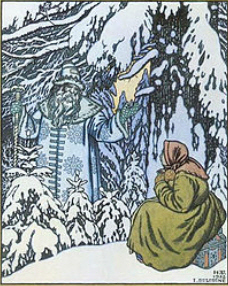
Father Frost acts as a donor in the Russian fairy tale Father Frost, testing the heroine before giving her riches.
“Fairy tales begin with conflict because we all begin our lives with conflict. We are all misfit for the world, and somehow we must fit in, fit in with other people, and thus we must invent or find the means through communication to satisfy as well as resolve conflicting desires and instincts.” ― Jack Zipes, The Irresistible Fairy Tale: The Cultural and Social History of a Genre
Fairy tales are more than true: not because they tell us that dragons exist, but because they tell us that dragons can be beaten.” ― Neil Gaiman, Coraline
“Fairy Tales always have a happy ending.” That depends… on whether you are Rumpelstiltskin or the Queen.” ― Jane Yolen, Briar Rose
“If you want your children to be intelligent, read them fairy tales. If you want them to be more intelligent, read them more fairy tales.” – Albert Einstein
“Fairy tales were not my escape from reality as a child; rather, they were my reality — for mine was a world in which good and evil were not abstract concepts, and like fairy-tale heroines, no magic would save me unless I had the wit and heart and courage to use it widely.” ― Terri Windling
“People need to believe in more than what they see in everyday life. Somewhere inside, we all know that there is more out there than we experience normally. A belief in the other world can help explain why things happen to us. It can give us hope. I feel that we all hope we never get to be too old to fly to Never-Never Land or go through a wardrobe into Narnia. We want to think that there is something looking back at us when we look at the stars. We want to think that just around the bend in the forest, we’ll find fairies dancing in a ring. I hope that my work affirms those beliefs,” she continues. “I want people to think of my work as a key to that other world.” – Wendy Froud “The child intuitively comprehends that although these stories are unreal, they are not untrue …” ― Bruno Bettelheim, The Uses of Enchantment: The Meaning and Importance of Fairy Tales
“The child intuitively comprehends that although these stories are unreal, they are not untrue …” ― Bruno Bettelheim, The Uses of Enchantment: The Meaning and Importance of Fairy Tales
“ Truly, I think the degree to which the bourgeoisie has appropriated the culture of the poor is very interesting, it’s very shocking. Fairy tales are part of the oral tradition of Europe. They were simply the fiction of the poor, the fiction of the illiterate. And they’re very precisely located.” – Angela Carter, author and also the translator of Charles Perrault’s work
“More effectively than any of the other tales, ‘The Emperor’s New Clothes’ established Andersen’s reputation as a man who created stories for children — not just in the sense of target audience, but also as beneficiaries of something extraordinary. The lesson embedded in it is so transparent that its title circulates in the form of proverbial wisdom about social hypocrisy. But more importantly, ‘The Emperor’s New Clothes’ romanticizes children by investing them with the courage to challenge authority and to speak truth to power.” – Maria Tatar, author of The Classic Fairy Tales
“I will tell you, too, that every fairy tale has a moral. The moral of my story may be that love is a constraint, as strong as any belt. And this is certainly true, which makes it a good moral. Or it may be that we are all constrained in some way, either in our bodies, or in our hearts or minds, an Empress as well as the woman who does her laundry. … Perhaps it is that a shoemaker’s daughter can bear restraint less easily than an aristocrat, that what he can bear for three years she can endure only for three days. … Or perhaps my moral is that our desire for freedom is stronger than love or pity. That is a wicked moral, or so the Church has taught us. But I do not know which moral is the correct one. And that is also the way of a fairy tale.” ― Theodora Goss, In the Forest of Forgetting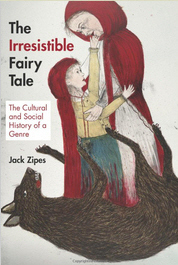 “Far more often [than asking the question 'Is it true?'] they [children] have asked me: ‘Was he good? Was he wicked?’ That is, they were far more concerned to get the Right side and the Wrong side clear. For that is a question equally important in History and in Faerie.” ― J.R.R. Tolkien, On Fairy-Stories
“Far more often [than asking the question 'Is it true?'] they [children] have asked me: ‘Was he good? Was he wicked?’ That is, they were far more concerned to get the Right side and the Wrong side clear. For that is a question equally important in History and in Faerie.” ― J.R.R. Tolkien, On Fairy-Stories
“The way to read a fairy tale is to throw yourself in.” ― W.H. Auden
“People who’ve never read fairy tales, the professor said, have a harder time coping in life than the people who have. They don’t have access to all the lessons that can be learned from the journeys through the dark woods and the kindness of strangers treated decently, the knowledge that can be gained from the company and example of Donkeyskins and cats wearing boots and steadfast tin soldiers. I’m not talking about in-your-face lessons, but more subtle ones. The kind that seep up from your sub¬conscious and give you moral and humane structures for your life. That teach you how to prevail, and trust. And maybe even love.” ― Charles de Lint, The Onion Girl
The two illustrations are from Wikipedia. Click on the book cover graphics to see Amazon’s listing for them. Happy Thanksgiving and happy reading.
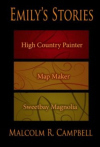 Malcolm R. Campbell is the author of contemporary fantasy, including “The Betrayed,” and fantasy short stories, including “Emily’s Stories.”
Malcolm R. Campbell is the author of contemporary fantasy, including “The Betrayed,” and fantasy short stories, including “Emily’s Stories.”


November 24, 2013
January deadline for Glacier Park artist-in-residence applications
From NPS Glacier

Lake McDonald – NPS photo
The program offers professional artists the opportunity to pursue their artistic discipline while being surrounded by the park’s inspiring landscape. The program seeks professional artists whose work is related to the park’s interpretative themes and supports the mission of the National Park Service.
The program provides an artist with uninterrupted time to pursue their work and the opportunity to engage and inspire the public through outreach programs. Park housing is provided for a four-week session during the summer or fall season.
The artist is required to present several public programs during their residency. The programs must be related to their experience as the artist-in-residence and can be demonstrations, talks, exploratory walks, or performances. Digital images of selected work produced as a part of the residency may be used in park publications, websites and presentations for education and outreach.
Artists of all disciplines are encouraged to apply. Applications are available online at https://www.callforentry.org. The deadline to apply is January 30, 2014. For more information contact the park at 406-888-7800.
-
Click here for a list of Glacier’s past artists in residence.
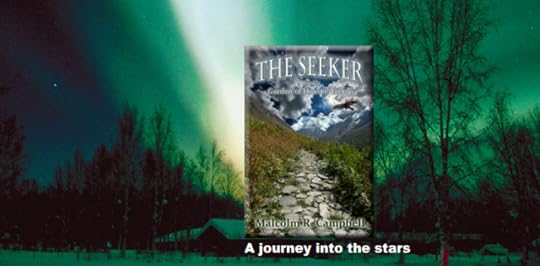
A Glacier Park novel on Kindle


November 23, 2013
Garden of Heaven – a trilogy of stars, storms and fire
This post is a message from your sponsor, er, me.
This year has been the year of the “Garden of Heaven Trilogy,” my series of novels about a protagonist born on a Montana sheep ranch who loses his first love while looking at the stars (The Seeker), joins the Navy during the Vietnam war and finds himself more distressed by news from home than events in the South China Sea (The Sailor), and ultimately teaches at a small Midwestern college where lies and slander take precedence over literature and history (The Betrayed).
While writing the trilogy, I saw the scenes in these adventures as old stories, parts of which are true and not forgotten, that lent themselves to a mix of magical realism and contemporary fantasy. The stories could have happened anywhere, but those in the Garden of Heaven Trilogy burnt their way through Florida’s swamps, Montana’s mountains, and an old city in America’s heartland.
The Seeker and The Sailor are available in paperback as well as multiple e-book editions including Kindle and Nook. The Betrayed, which just came out this month, is available on Kindle and Nook as well as at Smashwords. (Click on the graphics to see the Kindle versions.)
Here are three tempting excerpts from the trilogy:
(David is watching the scene in a dream.)
“Where is your church, Anne Hill?”
He sullied her name by saying it.
“My church is down Adams past Park Street.”
Nick laughed. “Presbyterian are you, with or without your panties on? One of the elect are you? Predestined to be here at this moment upon the crisscross of two streets.”
Pervert.
“Wrong church.”
Nick leaned in close, through David, and David felt cold.
“Mary Baker Eddy’s church, then, where they will tell you I am an illusion.”
“Yes,” said Anne.
He looks ill, and he smells ill, like pissed-on sheets and last week’s sweat. If I shove him away and run, the police station isn’t that far away.
“Yes,” she said, “the Christian Scientist Church.”
“Oh, poor girl, you think none of this is real,” said Nick, spinning in a circle and pointing at the buildings on the corners, the street lights and the fire hydrants, and the parked cars.”
Humor him?
No, that will anger him. “I don’t know, Nick.”
David stood close to Nick and shoved at him, and when that didn’t work, he whispered in his ear, hoping the words would seem like his own thoughts. That didn’t work either.
“My pain is as real as this street, Anne. Help me pray it away.”
She stepped back and turned to run, but Nick was strong and quick and not as sick as he looked. He grabbed her arm. She swung her purse into his face, wrenched away, and ran toward the dark newspaper office.
Hide.
Nick flung himself after her, tripped and caught her by the ankle. She cried out when her elbow hit the curb.
“You broke my elbow, you sorry bastard.”
“If you’re a Christian Scientist, their readers will heal your elbow,” he said, out of breath already. “But if this place is your true church, they’ll gather up all your sins fit to print. Pray with me now. The Lord wants you to be a Christian.”
He pulled her up and shoved her against the side of the building.
-
Coleman watched several small fish jumping alongside the boat, couldn’t quite say the words, coughed, spat, and got himself composed. “Heavy ground fire,” Coleman said without looking at David. “Ackersly saw him go into the water and sink like a stone, then circled until he was on bingo fuel. No sign of him; he never ejected. South Search and Rescue came up empty and called it a day.”
“He was a good man.”
“Good enough to steal my chair,” said Coleman. “You need some time?”
“Yes.”
“Ward, how much do you know about a sluff (nickname for an A-7 Corsair, a ‘short little ugly fat fucker’) speed brake?”
“Absolutely nothing.”
“Christ, why can’t they send you people to school before you show up on my watch?”
“God only knows, Chief.”
“I’ve got a little OJT waiting for you when you’re of a mind to do it.”
“Thanks, Chief.”
Coleman slapped him on the back and cut across the flight deck toward the island.
-
When the lightning struck the staff at the foot of the grave, it found its twin, forty-three years gone, raised the old rowan from the dead and brought the sacred fire up out of the tomb. The fire gathered itself within the wood while the lovers danced. Sikimí was the first to notice the new life and drew close, touching the alpenstock with his muzzle, sniffing it, licking it. His soft whinny caught David’s attention. Then he noticed the hackamore and the saddle.
“Why are you wearing such things, Sikimí?”
“He doesn’t want you to fall again. Now, intend fire,” whispered Anne, as he pulled the staff from the earth. “Intend to see it.”
“It’s warmer than usual,” he said. “But that’s all.”
“You’re overly tired; use Sikimí’s strength.”
The horse came alongside the half-moon bench nearest the tree. For once, David did not need a stepladder or fence. He put his foot in the stirrup, flung his right leg over the horse’s back, settled down into the unfamiliar saddle, and pulled the staff up after him. The rain had slacked off, but the clouds were regrouping for another onslaught.
“If lightning strikes the staff again, we’re screwed, Sikimí.”
Sikimí snorted and backed out from under the tree, head high, ears alert, moving—almost dancing—between the two half-moon benches.
“Now,” said Anne, “release its fire.”
Sikimí’s forelegs were shuffling, he was about to bolt, impatient, kicking up dirt, ready to go. David reined him in to the extent that was possible, startling him almost, so unused to reins he was, and he looked around, eyes as daemon and bright as they had been at the base of Nináistuko years ago. David reached forward and rubbed the great horse’s neck.
“Shh, shh.”
David held the staff out away from him, treating it like a loaded weapon, and pointed it toward the gathering clouds. He stilled his mind, heard the unconjugated flow of Sikimí’s thoughts, felt the horse begin to walk slow and easy with outstretched forelegs, saw the tree and the gravestone and the field drawing away, then the world was between breaths and all of a single point, and then he said, “fire now.”
-
I hope you enjoy exploring the trilogy!


November 20, 2013
Briefly Noted: ‘New Fairy Tales: Essays and Stories’
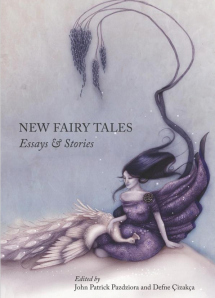 Is there a market for a book that mixes academic writing and stories? Normally, I wouldn’t think so outside the world of college textbooks. But this book works. Maybe it’s because so many of us who love reading fairy tales also like reading about what makes them tick.
Is there a market for a book that mixes academic writing and stories? Normally, I wouldn’t think so outside the world of college textbooks. But this book works. Maybe it’s because so many of us who love reading fairy tales also like reading about what makes them tick.
In the introduction, the editors write,
“In New Fairy Tales, we have worked with both writers and academics, as well as with writers who are academic and academics who are writers. Fiction and critique appear within the same sections rather than separately. We hope the interplay between critical thought and aethetic practice will inspire even more new fairy tales to come to life.”
The stories an essays are divided up into five sections: Miniatures, Storytellers, Shadows and Reflections, Fairy Brides, and Fairy Tale Pedagogy. The book includes offerings from Claire Massey, Katherine Langrish, Christopher MacLachlan, Elizabeth Reeder, Joshua Richards and Kate Wolford. The thematic sections are supported with notes for readers who like following up on sources.
From the Publisher
New Fairy Tales unites critical research and creative retelling of the fairy tale tradition from the Early Modern period to the present day. Academic essays intersect with new fiction and poetry, to create a unique, polyvalent discourse. The essays discuss influential works from authors including Hans Christian Andersen, George MacDonald, Oscar Wilde, J. R .R Tolkien, J. K. Rowling, Neil Gaiman, and Tifli. Original literary fairy tales by Katherine Langrish, Elizabeth Reeder, and others, appear alongside, discovering and re-creating the art form while as is being discussed. The result is an audacious and innovative dialogue about fairy tales and storytelling.
Interview With the Book’s Editors
In a two part interview in “Enchanted Conversation: a Fairy Tale Magazine” (posted here and here), Çizakça says she hopes readers of the book will take away a “belief that fairy tales still contain endless possibilities for growth and innovation. That there are many different ways of writing a new fairy tale, and that there are many different traditions one can take inspiration from.”
According to Pazdziora. there’s been heightened interest in fairy tales in the English speaking world during the last two decades. “Of course there’s a long and distinguished tradition of folkloristics, and there’s been the German study, but looking at literary fairy tales both as a distinct genre and as a subgenre of children’s literature—and like it or not, it’s both those things—that’s fairly new, at least in the form it’s taking now.”
Perhaps this book will result in a follow-up anthology with an even wider representation of the world’s old and new fairy tales.
–Malcolm
 Malcolm R. Campbell is the author of contemporary fantasy novels, including “The Betrayed,” and fantasy short stories including the three-story set for kids and adults, “Emily’s Stories.”
Malcolm R. Campbell is the author of contemporary fantasy novels, including “The Betrayed,” and fantasy short stories including the three-story set for kids and adults, “Emily’s Stories.”


November 18, 2013
Writing: That spellbinding call to adventure
 “Every story involves a problem or Central Dramatic Question that disrupts the Ordinary World. The Hero must enter the Special World to solve the problem, answer the dramatic question, and return balance. The Ordinary World allows the storyteller to contrast the Ordinary and Special worlds. The ordinary World is the Hero’s home, the safe haven upon which the Special World and the Journey’s outcome must be compared. Areas of contrast may include the Special World’s physical and emotional Version of characteristics, its rules and inhabitants, as well as the Hero’s actions and growth while traveling through this Special World.” – Stuart Voytilla in Myth and the Movies
“Every story involves a problem or Central Dramatic Question that disrupts the Ordinary World. The Hero must enter the Special World to solve the problem, answer the dramatic question, and return balance. The Ordinary World allows the storyteller to contrast the Ordinary and Special worlds. The ordinary World is the Hero’s home, the safe haven upon which the Special World and the Journey’s outcome must be compared. Areas of contrast may include the Special World’s physical and emotional Version of characteristics, its rules and inhabitants, as well as the Hero’s actions and growth while traveling through this Special World.” – Stuart Voytilla in Myth and the Movies
“It is a very strong rule in drama, and in life, that people remain true to their basic natures. They change, and their change is essential for drama, but typically they only change a little, taking a single step towards integrating a forgotten or rejected quality into their natures.” – Christopher Vogler, The Writer’s Journey: Mythic Structure for Writers
“When a great adventure is offered, you don’t refuse it.” – Amelia Earhart.
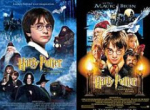 In Hero’s Journey stories, the dynamic question that stirs up the everyday life of the protagonist is referred to as “The Call to Adventure.” The event that gets the hero’s attention also gets the reader’s attention. Sometimes the reader knows about the event before the protagonist. In The Cuckoo’s Calling, for example, a body falls off a balcony in the first sentence of the book. Cormoran Strike, a private investigator, reads about the event in the newspaper but doesn’t know he will be involved until he’s hired to investigate the crime. If the Call to Adventure is delayed in the story, authors must decide how to keep readers engaged until the dynamic event occurs. Sometimes the would-be hero will need a series of calls before s/he reacts.
In Hero’s Journey stories, the dynamic question that stirs up the everyday life of the protagonist is referred to as “The Call to Adventure.” The event that gets the hero’s attention also gets the reader’s attention. Sometimes the reader knows about the event before the protagonist. In The Cuckoo’s Calling, for example, a body falls off a balcony in the first sentence of the book. Cormoran Strike, a private investigator, reads about the event in the newspaper but doesn’t know he will be involved until he’s hired to investigate the crime. If the Call to Adventure is delayed in the story, authors must decide how to keep readers engaged until the dynamic event occurs. Sometimes the would-be hero will need a series of calls before s/he reacts.
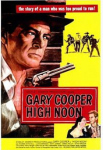 Here are some events from popular movies that disrupted the day-to-day life of the main character and created the circumstances that pulled him or her into a journey:
Here are some events from popular movies that disrupted the day-to-day life of the main character and created the circumstances that pulled him or her into a journey:
Star Wars: Luke’s life is turned upside down when a droid with a message from Princes Leia arrives on his planet.
Harry Potter and the Sorcerer’s Stone: Owls bring letters from Hogwarts inviting Harry to enroll. Each of the subsequent films/books in the series introduced the action through a new call to adventure. Each film/book was a journey, and the series was an overarching odyssey of journeys.
High Noon: A villain arrives at the small town’s train station. Like Notorious, this movie followed a mythic structure long before the format became widely known through the works of Joseph Campbell. The general public became more aware of Joseph Campbell after his interviews with Bill Moyers on PBS in the 1980s. Hollywood executive Christopher Vogler adapted Campbell’s work for authors and scriptwriters in his The Writer’s Journey: Mythic Structure for Storytellers and Screenwriters released in 1992.
 Notorious: The Cary Grant character, T.R. Devlin, asks the Ingrig Bergman character, Alicia Huberman, to infiltrate a spy ring.
Notorious: The Cary Grant character, T.R. Devlin, asks the Ingrig Bergman character, Alicia Huberman, to infiltrate a spy ring.The Matrix: A message on Neo’s computer screen tells him to follow the white rabbitt
You’ve Got Mail: A mega-book store opens around the corner from Kathleen’s small store forcing her to fight for her business
The Lion King: Mufasa tells Simba that one day the kingdom will be his.
Close Encounters of the Third Kind: After a UFO burns electrical lineman Roy Neary’s face and vehicle, he receives psychic images of Devil’s Tower. On the conscious level, a man wants to know more about a UFO; on the subconscious level, the story not only affects Roy, but has ramifications for all of human kind.
The Wizard of Oz: Toto runs away after being grabbed by Miss Gulch. The musical numbers an animated scenes in this movie often obscure the fact that it’s a journey film. Like Mary Poppins, this film shows that journey films and books need not be overtly dark, deep and inaccessible, and often attract wide audiences who are looking for “pure entertainment.”
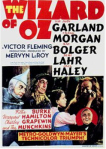 Field of Dreams: Ray hears a voice say “If you build it, he will come.” Like many journey films, this one is a very personal story about a man and his father. Yet, the results of Ray’s baseball field impact a lot of other people as well.
Field of Dreams: Ray hears a voice say “If you build it, he will come.” Like many journey films, this one is a very personal story about a man and his father. Yet, the results of Ray’s baseball field impact a lot of other people as well.The Hunger Games: Katniss Everdeen’s destiny is changed when her sister is randomly selected as a Hunger Games contestant. The resonance of this film with large audiences shows, I think, the inherent power of a mythic story even though most of those in the theater are viewing the story quite simply as an adventure.
The Call to Adventure may look random, but in a mythic sense–as Joseph Campbell saw it–the call was, in fact, the hero’s destiny. While that destiny may be personal, if often has ramifications for the protagonist’s family, town or nation.
Great myths–those many of us grew up hearing in school–tended to be about gods, national heroes and the destinies of peoples and nations. Fairytales, on the other hand, made similar things more personal and practical for everyday people. Both myths and fairytales have a lot to teach us about the human condition and its great themes as well as about how page-turning stories should be told.
Stories demand a certain amount of plausibility, so most protagonists–no matter how complacent they  may seems–are more or less ready for the adventure. They live under dysfunctional, dissatisfying, static or dangerous conditions. The Call to Adventure is the spark that ignites the waiting combustible material. As authors, we start our stories by upsetting the status quo: that is what the Call to Adventure does in fiction.
may seems–are more or less ready for the adventure. They live under dysfunctional, dissatisfying, static or dangerous conditions. The Call to Adventure is the spark that ignites the waiting combustible material. As authors, we start our stories by upsetting the status quo: that is what the Call to Adventure does in fiction.
Malcolm R. Campbell is the author of the Garden of Heaven Trilogy, a series of contemporary fantasy novels with many hero’s journey themes. They include “The Seeker,” “The Sailor” and “The Betrayed.” All three novels are available on Kindle, Nook, OmniLit, Smashwords and iTunes.


November 16, 2013
Briefly Noted: ‘The Land Across,’ fantasy by Gene Wolfe
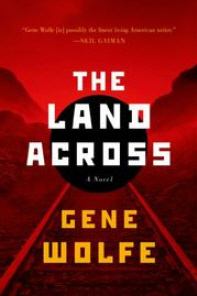 With all the high-energy buzz surrounding books like Donna Tartt’s The Goldfinch, Amy Tan’s The Valley of Amazement, and John Grisham’s Sycamore Row, I have to look a little harder to find new fantasy fiction, especially contemporary fantasy.
With all the high-energy buzz surrounding books like Donna Tartt’s The Goldfinch, Amy Tan’s The Valley of Amazement, and John Grisham’s Sycamore Row, I have to look a little harder to find new fantasy fiction, especially contemporary fantasy.
So, I’m happy to see that Gene Wolfe’s (“The Book of the New Sun” tetralogy) new release from Tor Books will appear a few days before Thanksgiving filled with corruption, supernatural powers and a Kafkaesque flavor. The Land Across unfolds in an imaginary Balkan country that’s difficult to visit and more difficult to leave–in part because of the secret police and in part because of a cult called the Unholy Way.
Teaser Excerpt from the Novel
Like most countries it is accessible by road or railroad, air or sea. Even though all those are possible, they are all tough. Visitors who try to drive get into a tangle of unmarked mountain roads, roads with zits and potholes and lots of landslides. Most drivers who make it through (I talked about it with two of them in New York and another one in London) get turned back at the border. There is something wrong with their passports, or their cars, or their luggage. They have not got visas, which everybody told them they would not need. Some are arrested and their cars impounded. A few of the ones who are arrested never get out. Or anyhow, that is how it seems.

Wolfe
Reviews
Kirkus Reviews says The Land Across “seamlessly blends mystery, travelogue, authoritarianism and the supernatural.”
Publishers Weekly says “Wolfe evokes Kafka, Bradbury, and The Twilight Zone in combining the implausible, creepy, and culturally alien to create a world where every action is motivated by its own internal logic, driving the story forward through the unexplored and incomprehensible.”
According to Library Journal’s starred review, “Wolfe, in masterful mood, builds his characters, explores the puzzles, links the elements together and contrives to render the backdrop both intriguingly attractive and creepily sinister. Sheer enjoyment.”
And Booklist writes, “Master fantasist Wolfe feeds into every tourist’s worst fears in this cleverly constructed travelogue though a country figuratively accessed through a looking glass. When an American travel writer, Grafton, sets out to document his experiences traversing a small, exceedingly obscure Eastern European country (the land across the mountains), he winds up in a nightmarish predicament from which there appears to be no escape.”
I like contemporary fantasy because, in blending magic into the real world, it brings us plots and characters that seem somewhat more plausible than swords and dragons on far-away planets. Almost everyone who has traveled has worried about being lost in an unfamiliar and unfriendly place. Wolfe’s protagonist is a travel writer who should know his way around the risks, but he’s nonetheless trapped in a place where mere unfriendliness would be a plus.
Malcolm R. Campbell is the author of contemporary fantasy novels, including “The Seeker,” “The Sailor and “The Betrayed.” Released this month, “The Betrayed” features a young English teacher at a small campus where lies and deceits take precedence over literature, history and science.


November 14, 2013
A writer’s perspective – seeing the world anew
 After a family visit to the Nevada Museum of Art in Reno, the adults rested on a stone wall while my two granddaughters burnt off energy racing around the adjoining Wilbur D May Sculpture Plaza.
After a family visit to the Nevada Museum of Art in Reno, the adults rested on a stone wall while my two granddaughters burnt off energy racing around the adjoining Wilbur D May Sculpture Plaza.
They were fascinated by the 19-foot-wide, 12-petal lotus flower created by sculptor Kate Raudenbush.
Called the Guardian of Eden, the metal sculpture inspired Buddhist symbolism, Hindu and Egyptian creation myths, ancient Flower of Life symbol. Even though I was tired, I couldn’t resist seeing what my granddaughters saw while standing in the shade beneath the Guardian.
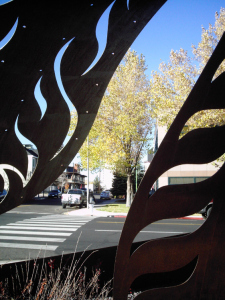
Stand in an unusual place and see the world anew.
The world looks very different from within the sculpture. My five-year-old granddaughter, Freya, liked standing close to the leaves and looking at the museum building and the others at that intersection through the holes. I can’t say what she saw, but I saw a world defined–created, perhaps–by the sculpture. The shade beneath the Guardian was part of it and so were the bits and pieces of West Liberty Street obscured by the petals.
That which was visible by my changed perspective beneath the sculpture was more important than that which was covered up. In many ways, the sensation is like staring at the spaces between the leaves of a tree rather than focusing on the leaves.
Children naturally explore their world and the, play with it–so to speak–by looking at it from slides and swings, by handing upside down on a jungle gym, peering at it through a stand of weeds, the hair of a doll or the holes in a colander.
As writers, we do this, too. When we do, what do we see? What do we imagine? And what new stories can we tell? It’s fun to speculate about such things and then go out and create one’s own adventures.
Malcolm R. Campbell is the author of contemporary fantasy, including the recently released “The Betrayed,” a story of lies, deceit and corruption on what appeared to be an Edenic college campus. Click on the banner to grab your Kindle copy today.


November 4, 2013
Fall Reading: See anything you like?
Once the barrage of lightweight summer books has come and gone, readers’ thoughts to turn fall reading and holiday gifts. To help us make our choices, the usual flurry of best books of the year articles and lists is showing up all over the Internet and in your favorite book stores. For this, you can always start with the list of 101 best books of the year on Publishers Weekly. (The feature has site errors in it, but click on OK and get past them.) Or you can look at USA Today’s list of fall books here.
Indie Bound publishes a “Next” list for upcoming books. Here are their favorites for November:
Likewise, Southern Independent Booksellers Alliance (SIBA) keeps up with bestsellers for bookstores in the southeast. Here’s the link to their hardbacks PDF. On the download, they’ve highlighted several books, including:
When people ask me about fiction and poetry, my answer depends on what (if anything) I know about the person. Do they like romance, fantasy, general fiction, crime? However, my three top picks of the year in fiction are:
And, for those who like poetry (I think Bryant’s latest book is only on Sams Dot Com):
I’m intrigued by these short stories, but they may not work for everyone:
In the crime category, I liked Robert Galbraith’s (J. K. Rowling) The Cuckoo’s Falling and Stephen King’s Joyland. In plays, I liked Elizabeth Clark-Sterne’s On the Doorstep of the Castle. Also, Tracy R. Franklin’s strong collection of poetry and essays Looking for the Sun Door is a beautiful book. And, since a short story of mine appears in the anthology, I have to mention Spirits of St. Louis: Missouri Ghost Stories. Of course, I wouldn’t mind if you clicked on the banner below to take a look at my new contemporary fantasy The Betrayed.
I hope you find plenty out there for your to-be-read list and for the lists of your friends and family.




